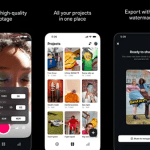By The Malketeer
A Step Forward or Another Well-Crafted PR Spin?
In a world where digital footprints are formed before most teens can even fully comprehend their impact, Instagram’s latest privacy measures signal an attempt to safeguard under-18s.
Meta’s social media giant is rolling out sweeping changes aimed at protecting its youngest users, but is this a true commitment to safety, or just another well-crafted PR campaign?
Parental Control and Teen Oversight: A Delicate Balance
As part of these changes, Instagram is launching dedicated ‘teen accounts’ across major countries like the UK, US, Canada, and Australia within the next two months, followed by other regions early next year.
These accounts will feature heightened privacy settings by default, such as limiting who can view content and requiring manual approval for new followers.
Over-15s will have more freedom to adjust these settings, while younger users aged 13-15 will need a parent or guardian’s approval for any changes.
Parents are now given the ability to monitor who their children are messaging and what topics interest them, but there is a boundary—they won’t be able to read the actual messages.
This balance between giving parents oversight while maintaining teens’ privacy raises questions about the effectiveness of these measures in truly protecting young users.
Addressing the Past: The Tragic Legacy of Molly Russell
The push for greater teen safety on Instagram follows years of public outcry, particularly in the wake of the 2017 suicide of 14-year-old Molly Russell in the United Kingdom.
Her father, Ian Russell, has been outspoken in his critique of Instagram, accusing Meta of prioritising profits over safety.
“The big announcement in the wake of Molly’s story breaking in 2019 did not achieve the result that it sounded like it should have done,” Ian Russell remarked, reflecting on the previous lack of meaningful changes from Instagram.
While Meta is now introducing AI to ensure that users’ ages are accurately represented, forcing any under-18s using adult accounts into teen accounts, many remain skeptical.
“Time after time, they don’t deliver,” Russell continued, his words underscoring the disconnect between Meta’s promises and its track record.
Are the Safeguards Enough? Critics Remain Cautious
One of the most significant restrictions will be on the exposure of sensitive content.
Instagram promises that harmful material will be blocked from teen recommendations, and notifications will be muted overnight to encourage healthier sleep patterns.
These moves are a direct response to growing concerns about the detrimental effects of social media on young users’ mental health.
But how well will Instagram enforce these new measures?
The UK’s communications regulator Ofcom found earlier this year that every child it spoke to had encountered violent material online, highlighting the limitations of existing protections.
“We welcome Instagram’s new protections for its younger users,” said Stephen Almond, the ICO’s Executive Director of Regulatory Risk.
“But we’ll keep pushing where we think industry can go further.”
What About Malaysia?
While Instagram’s privacy updates are being rolled out in several Western countries within the next 60 days, these safeguards are expected to be introduced in other countries in January, 2025.
As social media usage among Malaysian teens continues to rise, such measures could play a crucial role in ensuring safer online environments for the nation’s youth.
Local regulators and parents will undoubtedly be watching closely to see if the tech giant will prioritise the protection of young Malaysian users, as it has done in other markets.
Until then, the question remains—will Meta deliver or will this be yet another instance of PR promises falling short?
MARKETING Magazine is not responsible for the content of external sites.











